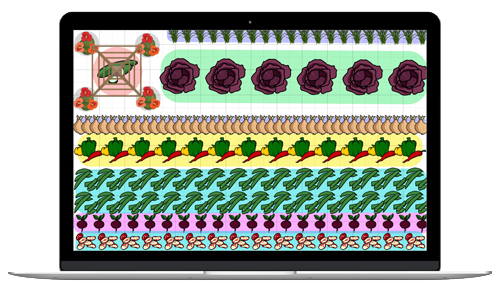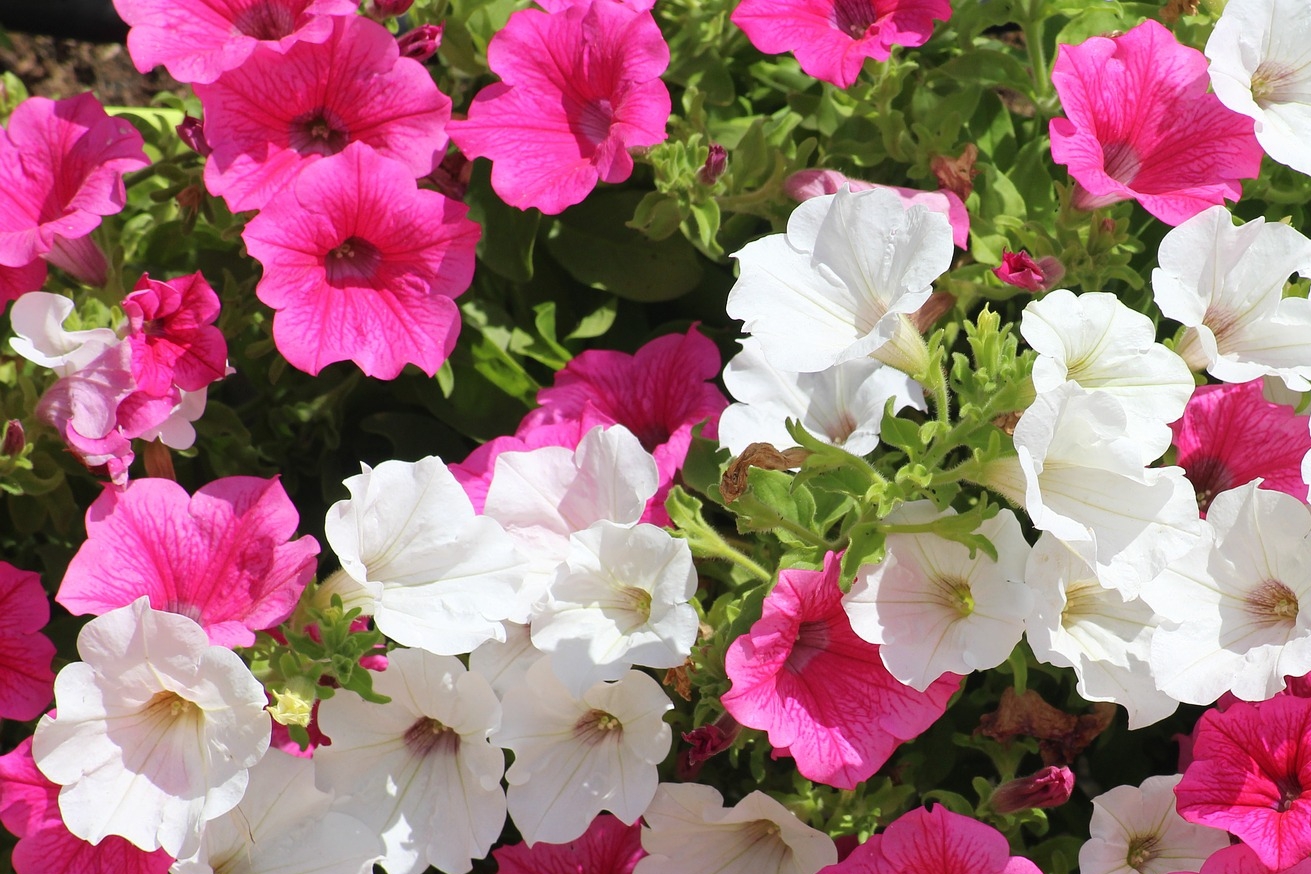
Planting, Growing, and Caring for Petunias
The Almanac Garden Planner - Use It Free for 7 Days!
Plan your 2025 garden with our award-winning Garden Planner.
Types
Multifloras
- ‘Carpet Series’ is very popular. They are compact, early blooming with 1½- to 2-inch blooms that come in a wide variety of colors, and are ideal for ground cover.
- ‘Primetime’ series stay compact and uniform, covered with 2¼-inch flowers.
- ‘Heavenly Lavender’ is an early, compact, double, deep lavender blue with 3-inch blooms on 12- to 14-inch plants.
Grandifloras
- ‘Sugar Daddy’ (Petunia Daddy Series), which sports purple flowers with dark veins.
- ‘Rose Star’ (Petunia Ultra Series), whose flowers look striped because of its rose-pink flowers with a white center.
Floribundas
- ‘Celebrity’ series petunias are compact and rain-tolerant. The flowers reach 2½ to 3 inches across.
- ‘Madness’ series petunias have big, 3-inch flowers in many veined and solid colors. They are compact and bloom until frost. They bounce back well after rain.
- ‘Double Madness’ petunias are compact and floriferous with big, 3-inch flowers all through the summer. Like their single counterparts, ‘Double Madness’ petunias bounce back within hours of a rainstorm.
Millifloras
- ‘Fantasy’ forms neat, compact mounds.
Trailing Petunias
- ‘Purple Wave’ was the first cultivar in the class of spreading petunias. It produces large blooms of deep rose-purple. It is tolerant of summer heat, drought, and rain damage. ‘Purple Wave’ remains under 4 inches tall.
- ‘Wave’ series petunias are available in a multitude of colors. Most are not quite as ground-hugging as the original. They are weather tolerant, disease resistant, and heavy-blooming.
ADVERTISEMENT
We recently went on vacation and before we left I took off all the dead blooms on my plant. We have been back for well over two weeks now and there are no new buds or blooms on my plants. The greenery is still looking good but no new blooms appearing. What can I do?
This sounds like your petunias just went into a vegetative state. This can happen sometimes when dead heading all flowers during summer months, because plants are very influenced by light cycles. The species you have should tell you what seasons or time frame it should flower. You may also want to check if it is getting too little sunlight due to the movement of the shadows, depending on the sun's position in the sky. As long as the vegetative growth is continuing, though, it should be fine and just may need a little more water or food (sometimes I will through in some molasses with regular food to give it a little kick to bloom again). If it is in a container, though, it may be getting rootbound and it would be time for a larger container or some more regular pruning to keep the plant's size limited. The last part I would say is that it may also need a fresh soilless mix or a good root system flush followed by a light inoculation of mycorrhizae to help facilitate nutrient and water delivery and storage. Also remember that soilless mixes are organic material that can become soil after a while, and this could decrease the drainage as well. I hope this helps! I tried to cover as much as possible, since I am unsure of the specifics of the other factors. Good luck! :)
I did forget to ask about the fertilizer you use, as well. If you are providing a higher nitrogen fertilizer, it will mainly produce leaves. They will be green, and with too much they become a shining waxy green and begin yellowing and browning on the tips. This is definitely a cause for a heavy flush with water, let it recover for a week and balance the nutrients after. With the soilless mixes, you would want to flush several times since the water will pass through so quickly (same as watering them).
My hanging baskets has beautiful wavy hanging petunias. But some of the waves leaves have gotten much bigger than then the other wave runs and its flowering is limited to just the tips of those wave runs. What does this mean? And what action do I need to take?
This can happen to petunias without proper pruning. To prevent it, cut back 1/3 of the stems every 10 days. This should keep the leaves from getting oversized and promote flowering on all the stems.
I bought some beautiful hot pink petunias about two weeks ago. They were growing well and looking so much better than when I bought them. However, yesterday I noticed some of the flowers are fading majorly around the edges. The leaves towards the base of the plants are turning yellow also. I noticed you recommend that others with yellowing leaves fertilize their plants, but since these are still new I wasn't sure if that was the answer.
Are your flowers getting enough sun? They grow best in full sun. Let the soil dry between waterings. Petunias do not need a lot of water. You can give them some diluted liquid fertilizer now to see if that will help.
Yesterday, I bought a small spreading Petunia plant in a 4 inch by 4 inch pot. How should I transplant it into the ground? Also, overnight, some blossoms closed up. Should I deadhead these?
In general, you can plant spreading petunias about a foot or so apart, unless you are transplanting into a container, in which case you can crowd them a little more. Full sun and moist, but not waterlogged, soil is ideal. Some spreading types can cover an area 3 to 4 feet at maturity. See above article for general care. In general, deadhead any flowers that are withered and browning, to encourage blooming. Some spreading types, however, such as the Wave series, do not require deadheading for vigorous bloom.
Will cuttings from petunias root ?












